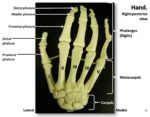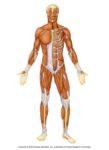Ear, Nose, and Throat Anatomy Poster
An Ear, Nose, and Throat (ENT) Anatomy Poster is a visual tool designed to provide a comprehensive overview of the interconnected structures involved in breathing, eating, and hearing. These posters are often used by otolaryngologists, medical professionals who specialize in the anatomy, function, and diseases of the ear, nose, throat, and head.
Ear Anatomy
The ear anatomy section of the poster typically illustrates the outer, middle, and inner ear. The outer ear includes the pinna and the ear canal, which collect sound waves and direct them into the ear. The middle ear contains the eardrum and three tiny bones called ossicles that amplify the sound waves. The inner ear houses the cochlea and the vestibular system, which are responsible for converting sound waves into electrical signals for the brain and maintaining balance, respectively.
Nose Anatomy
The nose anatomy section of the poster often displays the structure of the nasal cavity, including the nostrils, nasal septum, and sinuses. It may also depict conditions such as a deviated septum or nasal polyps. The nose plays a crucial role in respiration by filtering, warming, and humidifying the air we breathe. It also houses the olfactory bulb, which is involved in the sense of smell.
Throat Anatomy
The throat anatomy section of the poster usually shows the pharynx and larynx. The pharynx is a tube that serves as a pathway for both food (leading to the esophagus) and air (leading to the larynx). The larynx, or voice box, contains the vocal cords and is essential for speech, swallowing, and breathing.
Additional Features
ome ENT Anatomy Posters may also include views of the upper respiratory tract through cross-sectional, frontal, and cellular views. They may also illustrate common ENT diseases and conditions, providing a valuable educational resource for both medical professionals and patients.
In conclusion, an Ear, Nose, and Throat Anatomy Poster is a detailed, informative tool that visually represents the complex structures and functions of the ear, nose, and throat. It serves as an essential resource for otolaryngologists and a valuable educational tool for patients, helping to enhance understanding and communication in the medical field.



